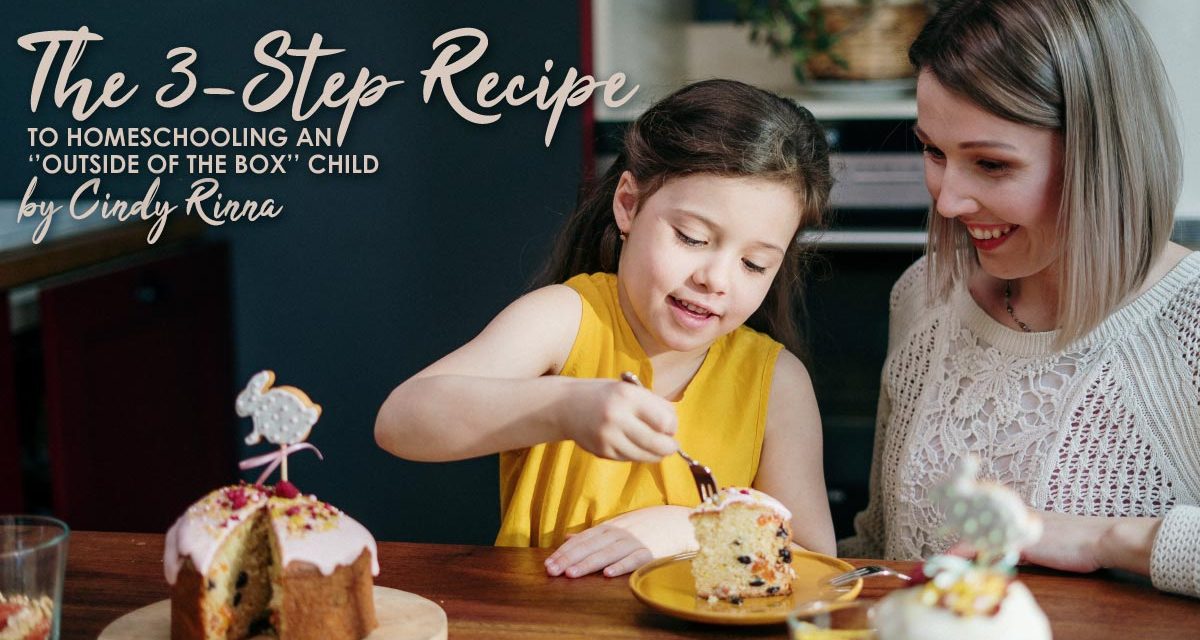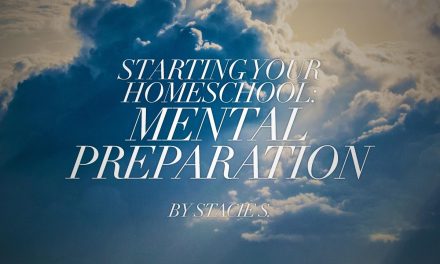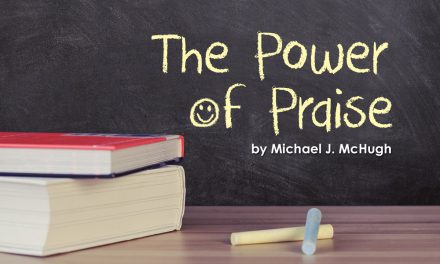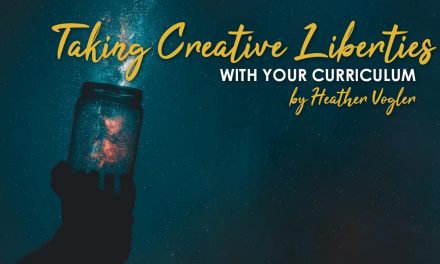Any great recipe looks simple enough at onset. Take cake, for example. The recipe is essentially…
- Flour
- Sugar
- Butter
- Eggs
- Baking powder
- Milk
- Vanilla
But we know the type of ingredients you use make all the difference. The better quality the ingredients, the better the final product. This is also the case with your homeschool.
I could tell you that you need to teach reading, writing, math, science, history, and some sort of art. That would be a simple enough recipe. But we all know there are dozens of little decisions packed into each of those subjects. What style? Which curriculum? What level? And so on.
Before you know it, a simple list becomes an overwhelming endeavor.
Now add a twist…for your homeschool this twist is that you’ve got what I affectionately refer to as an “outside-the-box” child. Perhaps he is on the autism spectrum or has ADHD. Perhaps dyslexia or another learning challenge plagues her. Or maybe it’s sensory processing or emotional challenges. To illustrate how this may complicate things, let’s revisit our cake example and add some dietary restrictions.
- ..but it needs gluten free
- ..but it can’t be real sugar…or artificial…monk fruit? Stevia? What’s considered “safe” these days?
- ..but it’s got to be dairy-free and it can’t be oil because the cake won’t rise properly…
- ..it’s really best if these are from local chickens
- Baking powder…minus the aluminum, please
- ..again, dairy-free, but it can’t be coconut based or the cake taste will be altered
- ..don’t even think of getting that imitation stuff
Do you see how a simple recipe suddenly became a lot of extra work? Making this cake for the first time could easily take you three times the normal cake-baking time. You might get the wrong ingredients and the cake won’t turn out how you expected. Or you may become so discouraged and overwhelmed that you give up and never want to bake another cake again. Do you see where this is headed?
In our homeschools, we are plagued with hundreds of decisions all day, all week, all year. These decisions become so burdensome that they can steal the joy of homeschool – one of the primary reasons we began in the first place!
Unless, these decisions are already made.
If I have a friend I regularly buy eggs from, I won’t run out and have to buy store-bought.
If I know the brand of vanilla I buy, it will be as simple as picking it up from the store.
When you make your decisions up front, you are free to homeschool with joy, peace, and confidence. Hiccups will interrupt your days, of course, that’s the way life works. But when your pillars are strong, you can weather the storms.
Making your decisions up front also allows you to eliminate other options very quickly. You put blinders on and are able to deflect with little effort anything that does not fit into your existing decision.
If I had a bad reaction to soy milk once, I’m not going to make it a dairy milk replacement.
If my local store does not sell a certain brand of flour, I’m not going to purchase that flour regularly.
Or in my homeschool…
If I’m a Charlotte Mason homeschooler, it’s easy for me to ignore information on lap books, unit studies, and 100% online learning options.
If I know ABA therapy is not a fit for my autsitc son, I will not be distracted by “if-then” charts, PECS systems, or online social teaching games.
Now back to our recipe. There are three basic ingredients for homeschooling an outside-the-box child
- An attitude that works for your child
- A homeschool philosophy that works with your child
- Therapy options that connect you to your child
Let’s explore those ingredients a little more with some questions.
Attitude
This is everything in your homeschool and I’m talking about your attitude, not your child’s. This goes way beyond having a “positive attitude” or sugar-coating what is difficult. We need to have attitudes that are for our children; that intentionally see them and their challenges as a part of the whole package of who they are and love and enjoy them anyway. This is a determination to choose to respond to situations in your day with a certain mindset instead of another.
What are the adjectives that describe your general attitude towards your child? Hopeful and loving? Consistent and patient? Frazzled and snippy?
Homeschool Philosophy
There are many to choose from and the longer you homeschool the more your philosophy will become a hybrid of a few philosophies or methods filtered through what works best for your family. In the beginning especially, though, it’s important to have a place to start from or you’ll be blown this way and that way with every breeze because you don’t have roots. The truth is, some philosophies are simply a better fit for our outside-the-box kiddos than others. We all have room to grow but be sure that you choose a method with the ambition to work with your child’s strengths, not just to correct his challenges.
What homeschool philosophy/method would work with your child best?
Therapy Options
There are many options for therapy and if you are not careful, you can find yourself feeling like you need to do all of them. Commit to one therapy for at least a month before you evaluate how things are going. A great non-bias tool for evaluation is the ATEC (Autism Treatment Evaluation Checklist) offered at no cost by the Autism Research Institute. Take it before starting your child on a new therapy to get a baseline and then take it again after a month to see if your child’s numbers have improved. Another great evaluation is your relationship with your child – is it getting better or worse?
Which therapy makes you feel most connected to your child?
Take a couple of hours – or even days – to pray over the specifics concerning your attitude, your homeschool philosophy, and your therapy options. But once you’ve decided – once you are solid in your beliefs – you can mix them all together and create a beautiful atmosphere that your whole family can love.





